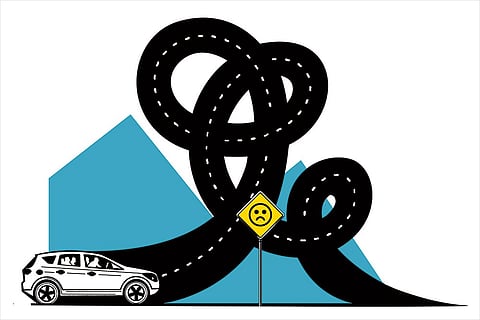It was a decision made in haste and thereafter repented at leisure. Having decided to drive down to Rishikesh—some 240 km from New Delhi— last weekend for the purpose of giving myself, my family and two family friends a much-needed break, we broke all barriers of our patience instead. If soothing our nerves, inhaling some fresh air and feasting on the sights and sounds of the idyllic town by the Ganga was the idea, what we ended up with instead were hours and hours of traffic snarls, rising tempers and an unending storm of dust en route.
Even by the ill-kept potholed standards of Indian roads, the distance between Delhi and Rishikesh ought not to have taken more than six hours. I am told that is what it normally takes on an ordinary day. But weekends are different and the last Saturday was also Eid-ul-Fitr, making the day all the more extraordinary. All of Delhi seemed to be on the road and heading towards easy getaways. It meant the traffic was hellish. Having started out at 6.45am, we finally made it to our destination at 8.45 pm. The 14 hours spent on the road, minus a 30-minute breakfast break, tested my driving skills and composure.
